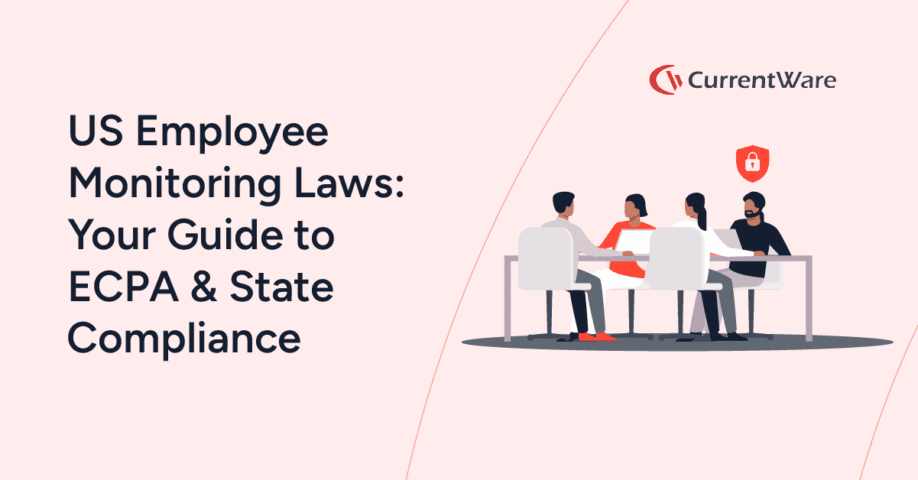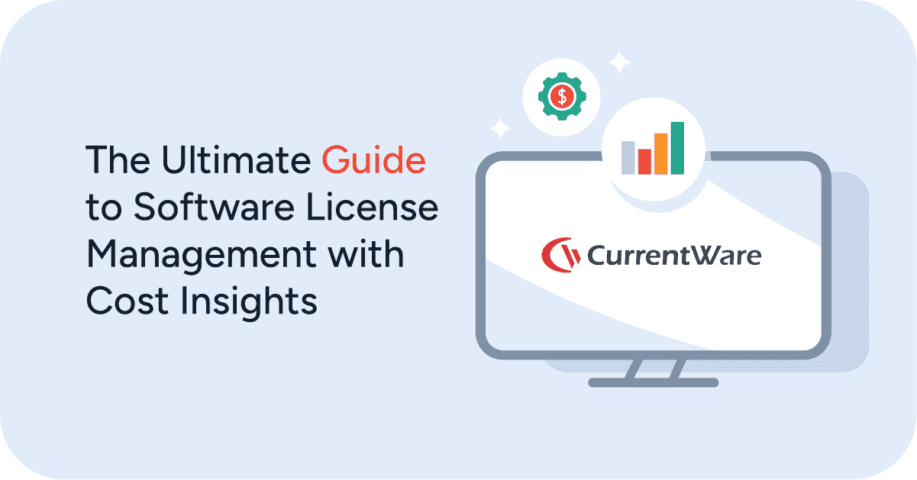Top Privacy Tips for Monitoring Employees Without Compromising Trust

Want to start monitoring employees in the workplace?
In today’s privacy-conscious world employers need to monitor employees in a way that is transparent, minimally invasive, and respectful of employee privacy.
These tips will reduce impacts on employee privacy so employers can maximize the benefits of their employee monitoring strategy.
FREE WHITE PAPER
Best Practices for Monitoring Employees
In today’s privacy-conscious world employers need to monitor employees in a way that is transparent, minimally invasive, and respectful of employee privacy.
Want to use monitoring tools to get instant visibility into employee productivity, engagement, and PC usage? Read this white paper to learn the best practices for monitoring employees in the workplace.
Workplace Privacy & Employee Monitoring: Best Practices for Employers (Video)
1) Transparency: Get Informed Consent For Workplace Monitoring
Employees that are not aware that they are being monitored, why they are being monitored, and how they are being monitored are less likely to accept being monitored by their employers. Organizations that are fully transparent with their methods and motivations will have higher acceptance rates and minimize the perceived invasiveness that employees have when being monitored.
Best Practices For Improving Transparency
- Disclose the scope of employee monitoring during onboarding and within employee handbooks/policies
- Ensure that employees understand how data is being collected, what data is being collected, and how that data will be used
- Involve a representative sample of employees during the planning process
- Gives employees access to their own data so they can see exactly what is being reported
Note: Employers that are subject to GDPR should not rely on employee consent as the sole justification for monitoring employees. The inherent imbalance of power in an employee/employer relationship has a significant influence on an employee’s ability to refuse. These employers must combine employee consent with other efforts to minimize the privacy impacts of employee monitoring.
2) Use Employee Monitoring Software for the Benefit of Employees
An Accenture business study found that 92% of workers are open to being monitored by their employers, but only if employers use it to provide benefits for the employees. When using employee and computer monitoring software, focus on the tangible benefits the solution will bring to employees.
- Self-monitoring. Employees that are empowered to improve their own productivity perform better than those who feel they are being subject to micromanagement.
- Increased opportunities. Employee monitoring improves visibility. This increased visibility allows employers to provide their employees with greater flexibility in their schedules and work styles, such as working from home.
- Better resource management. Workforce analytics data drives business intelligence, providing managers with the data they need to improve resource allocation and prevent employees from being overworked.
- Evidence of effort. Monitoring data clearly demonstrates overall workforce engagement. This helps shine a light on productive and engaged employees that may otherwise go unnoticed.
Also Read: What is Keylogger Software and Should You Use it?
3) Limit the Invasiveness of Employee Monitoring
Reduce Privacy Impacts by Monitoring Only What is Necessary
A privacy-first employee monitoring strategy tracks the minimum inputs needed to meet its stated purpose. For example, if the stated purpose is to enforce documented acceptable use policies this goal can be readily met through monitoring employee internet activity. Capturing webcam feeds and tracking individual keystrokes would be far more invasive than necessary.
Only Use Data For Its Stated Purpose
Lack of predictability leads to increased perceptions of invasiveness among employees. By using employee monitoring data for its stated purpose employers improve their employee’s trust that monitoring is being used fairly and responsibly.
Respect the Boundaries of Personal Devices
Employees have a reasonable expectation of privacy on their personal devices, even if they use them for work purposes. Employee monitoring solutions that limit data collection to work hours can reduce privacy impacts, though the potential to capture personal computer activity may remain a concern. This can be mitigated by limiting monitoring to internal network traffic rather than directly monitoring the devices that are connecting to the network.
4) Use Data Fairly When Monitoring Employees in the Workplace
Focus on aggregated data over individual data
Employers should reference aggregated data for insights rather than addressing the usage of specific employees. Addressing the computer usage of individuals should be reserved for clearly objectionable behaviors such as accessing porngraphy or engaging in illegal activities.
Do not use computer activity data as the sole indicator of performance
Periods of computer inactivity are not a sure sign of disengagement. Job-adjacent tasks such as creative thinking, planning, and phone calls aren’t often reflected in computer activity data. Employee monitoring data is best used to study trends, estimate overall engagement levels, and discover significant outliers in activity.
Do not make significant decisions solely based on collected data
High-impact decisions such as promotions, job retention, and salary negotiations require careful consideration. As computer activity does not directly reflect quality of work it should be used to inform decisions, not make them. This is especially true of automated decision making, which is prohibited under GDPR.
Also Read: How to Check Computer Activity: Monitor Usage with CurrentWare
5) Protect Computer Monitoring Software Data From Misuse
Employee monitoring data can be highly sensitive. Organizations need to ensure that adequate security measures are in place to prevent monitoring data from being misused or leaked to unauthorized parties.
- Limit data access to privileged individuals that have a direct need for the data
- Implement USB device control measures to prevent data theft
- Periodically delete data that is no longer relevant to the organization
- Managers with access to employee monitoring data must be trained on the organization’s policies surrounding the acceptable use of that data.
6) How to Monitor Employees Who Work From Home
It’s important to understand that employees working from the privacy of their own homes may perceive employee monitoring as more invasive. Fortunately, most of the very same strategies used to monitor in-office employees also apply to remote workers. In addition to the above tips, here are some unique considerations for monitoring employees that are working from home.
Tips for monitoring employees that work from home
- Do not monitor your employee’s personal devices
- Do not capture audio or video from devices that will be used in an employee’s home
- Employees with flexible schedules may have erratic working patterns. This should not be treated as a sign of disengagement.
- Do not interpret employees with lower computer activity as less productive. They may be working on job-adjacent tasks that aren’t able to be tracked.
Want to monitor work-from-home employees? Get started today with a free trial of CurrentWare’s remote workforce monitoring software suite.
Employee Monitoring Case Studies
Shady Maple Follows Best Practices
Shady Maple is a farm market and fresh produce distributor based in Eastern Pennsylvania, USA. They use employee monitoring and web filtering software to manage employee productivity and enforce the acceptable use of technology in the workplace.
Problem
During a period of rapid expansion Shady Maple realized that they needed to adapt their productivity management methods to scale with them. Excessive unproductive web browsing and file downloads were hogging the available bandwidth and distracting their employees. Without centralized access to web activity data they had no way to address this misuse of company resources.
Solution
Employee monitoring reports from BrowseReporter gave Shady Maple the exact insights they needed to address the misuse of technology in the workplace. They could readily identify the websites that were responsible for excessive bandwidth consumption, address inappropriate web activity in the workplace, and provide employees with an opportunity to self-manage their non-work web browsing.
BrowseControl’s category web filtering feature provided Shady Maple with a quick and convenient solution for proactively blocking websites that were known to contain pornography and other unsuitable content for their workplace.
Results
- Improved bandwidth availability. Bandwidth usage reports provided an opportunity to coach employees on Shady Maple’s internet use policies and block frequently abused websites that were unproductive and bandwidth-intensive. Employees were delighted by the increased productivity caused by improved network speeds.
- A safer workplace. Shady Maple protected their network and their employees from unsafe and inappropriate websites. Continuous monitoring and web filtering became an integral part of their operations, allowing them to detect and block high-risk web activity.
- Greater employee engagement. Direct access to their own web activity reports empowered Shady Maple’s employees to self-manage their productivity. With a scalable way to manage internet abuse without sacrificing autonomy Shady Maple noticed immediate improvements in the productivity of their employees.
- Data-informed management. Employee monitoring reports gave Shady Maple’s Human Resources department the ability to present tangible evidence of disinclination to employees who had been underperforming.
Barclays Lack of Transparency Backfires
“The stress this is causing is beyond belief. It shows an utter disregard for employee wellbeing. Employees are worried to step away from their desks, have full lunch breaks, take bathroom breaks or even get up for water as we are not aware of the repercussions this might have on our statistics”
Barclays whistleblower via City A.M.
Barclays is a bank based in the UK. As they process data of European citizens they are expected to be compliant with GDPR’s data processing requirements. A lack of transparency surrounding their employee monitoring practices prompted an investigation in August of 2020 by the Information Commissioner’s Office (ICO), the United Kingdom’s privacy watchdog.
Problem
Barclays installed productivity monitoring software on their employee’s workstations without their knowledge, consultation, or informed consent. Employees unexpectedly began receiving automated warnings once they fell below a certain activity threshold. The time that employees normally spent away from their computers became a source of inactivity that the program used to determine who would receive the warnings.
Because Barclays did not communicate their intentions before implementing the solution, their employees were uncertain as to how their activity data would be used. They became increasingly concerned that time spent stepping away from their desks, having full lunch breaks, or taking bathroom breaks would be used against them in performance evaluations.
Results
Barclays wasn’t wrong for wanting greater productivity from its workforce. Unfortunately their implementation lacked the transparency necessary to adequately communicate the goals and intentions of their solution. The combination of ambiguity and automated warnings caused their workforce analytics project to be perceived as an oppressive top-down disciplinary tool.
Conclusion
Employee monitoring is a critical business intelligence tool that bolsters productivity and gives employers valuable insights into their workforce. Organizations that keep employee privacy at the forefront improve acceptance rates of their monitoring strategy so they can make the most of these benefits.
Looking to dive deeper?
This blog post is just the tip of the iceberg – Download CurrentWare’s white paper Workplace Privacy and Employee Monitoring: Best Practices for Balancing Productivity, Security, and Privacy for the full story.
About CurrentWare
CurrentWare is a software company that provides a suite of workforce management solutions for computer monitoring, content filtering, data loss prevention, and remote power management.
CurrentWare’s solutions are adopted by a wide array of government and private organizations including schools, hospitals, libraries, and for-profit businesses. CurrentWare customers improve their user productivity, data security, and business intelligence with advanced awareness and control over how technology is used in their organization.


